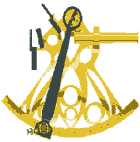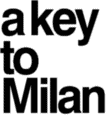












|
|
|
Science Museums
The origins of Milan's science museums
go back many years. The Natural History Museum was founded in
1838 as the first public museum in the city, a direct result of
Lombardy's great naturalist tradition; its original exhibits came
from donations made by Milanese scientists and collectors.

Today the situation is not so satisfactory,
especially if this collection is compared with that of the Smithsonian
in Washington, DC, or of the British Museums' Natural History
Department in Kensington, London. The times in which Milan's Natural
History Museum was one of the most important in Europe came to
an abrupt end in 1943, when a bombardment almost totally destroyed
both the building and the splendid old collections housed there.
And the National Museum of Science and Technology, despite its
roaring start in the 50s, has only recently recovered after suffering
for a long time the effects of a shortage of funds.
|
|


|
|
Museo di Storia Naturale
The place destined to house the City Council's
natural history collections was built ad hoc in 1893, on a site
- inside the Giardini Pubblici - that had long been occupied by
museums. After the destruction wrought by the war, it was methodically
rebuilt along the same lines and constantly enriched and rearranged.
Today the museum has regained a fair standard: it performs its
didactic role very efficiently and the effort made to reconstitute
the lost collections has produced twenty rooms with some remarkable
pieces. There is also a good library, as well as collections especially
designed for scholars and specialists.
The collections that are usually open
to the public consist of mounted animals, including examples of
several extinct species, and mineral and palaeontological
collections. The reconstruction and the efficient functioning
of the museum have been possible thanks to its extraordinary staff,
who operate in a climate of passionate professional commitment.
In 1984 the museum exhibited - after having made great efforts
recovering them - many items from an interesting 17th century
Milanese natural science collection, known as the Settala collection,
or Museum Septalianum. It consists of exhibits such as
scientific instruments, clocks, minerals, mounted animals, shells
and even robots, which reveal the cultural vitality of this period
of history when the natural sciences were approached with an attitude
full of curiosity and wonder towards man and his habitat.
This exhibition was planned to last only one year but its natural
history section has become permanent. There's a chance, however,
that it will return to the Ambrosiana
to which it previously belonged.
|
|
Corso Venezia 55
 |
Palestro
|
9AM - 6PM [Saturday and Sunday
-6:30PM]
• closed Monday
entrance free
tel. 02 88463280
|
|
Museo della Scienza e della Tecnologia
This is the most complete and interesting
science and technology museum in the whole country, with a remarkable
collection of models which reconstruct technical projects developed
by Leonardo da Vinci, and an excellent selection of vintage
automobiles, trains, airplanes and even old ships.
An Italian submarine (real!) is their most recente acquisition.
The museum also has various educational sections, on technologies
employed in the past and up to the electronic age. The setting
- a huge Renaissance monastery; quite unusual for such an institution
- adds to the appeal.
|
|
Via San Vittore 21
 |
Sant'Ambrogio
|
9:30AM - 4:50PM [Saturday and
Sunday through 6:30]
• closed Monday but not on Sundays & public holidays
entrance charge
tel. 02 48010040
website |
|
More science museums
A minor scientific
museum is the Civico Museo Navale Didattico (same building
and same opening times as the Museo della Scienza e della Tecnica;
entrance free; 02 8010040). Besides a series of real boats,
anchors and figureheads of the Ugo Mursia collection, it exhibits
over 3,000 ship and boat models (for the most part
antique ones) that delight both sea lovers and modelfans.
The activities of the Planetario Hoepli (Corso Venezia
57, inside the Giardini Pubblici not far from the Natural History
Museum; 02 2895785) are certainly interesting from a scientific
standpoint. The planetarium was built in 1930 by architect Piero
Portaluppi, who was commissioned by the Milanese publisher Ulrico
Hoepli. It is a private foundation which operates in close cooperation
with the City Council.
You will find information on the Acquario (Aquarium) on
the printed
guidebook (page 182).
|
|
|
|
All rights reserved
copyright © 1996-2001
Monica Levy, Roberto Peretta
copyright © 1996-2001
Ulrico Hoepli SpA, Milano

[Want to purchase
the guidebook ?]
[Instructions on how
to do it]
|
|
|
|